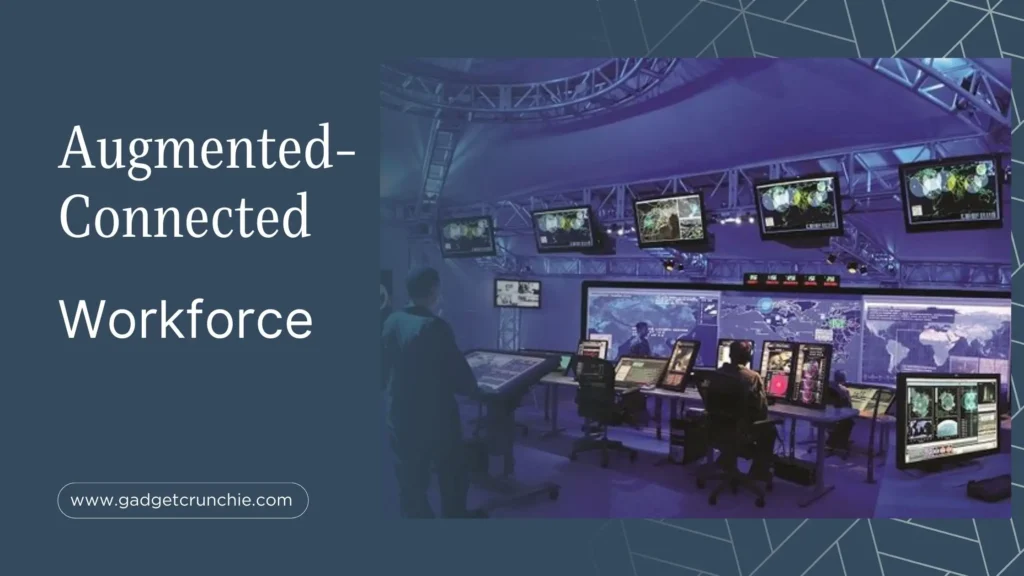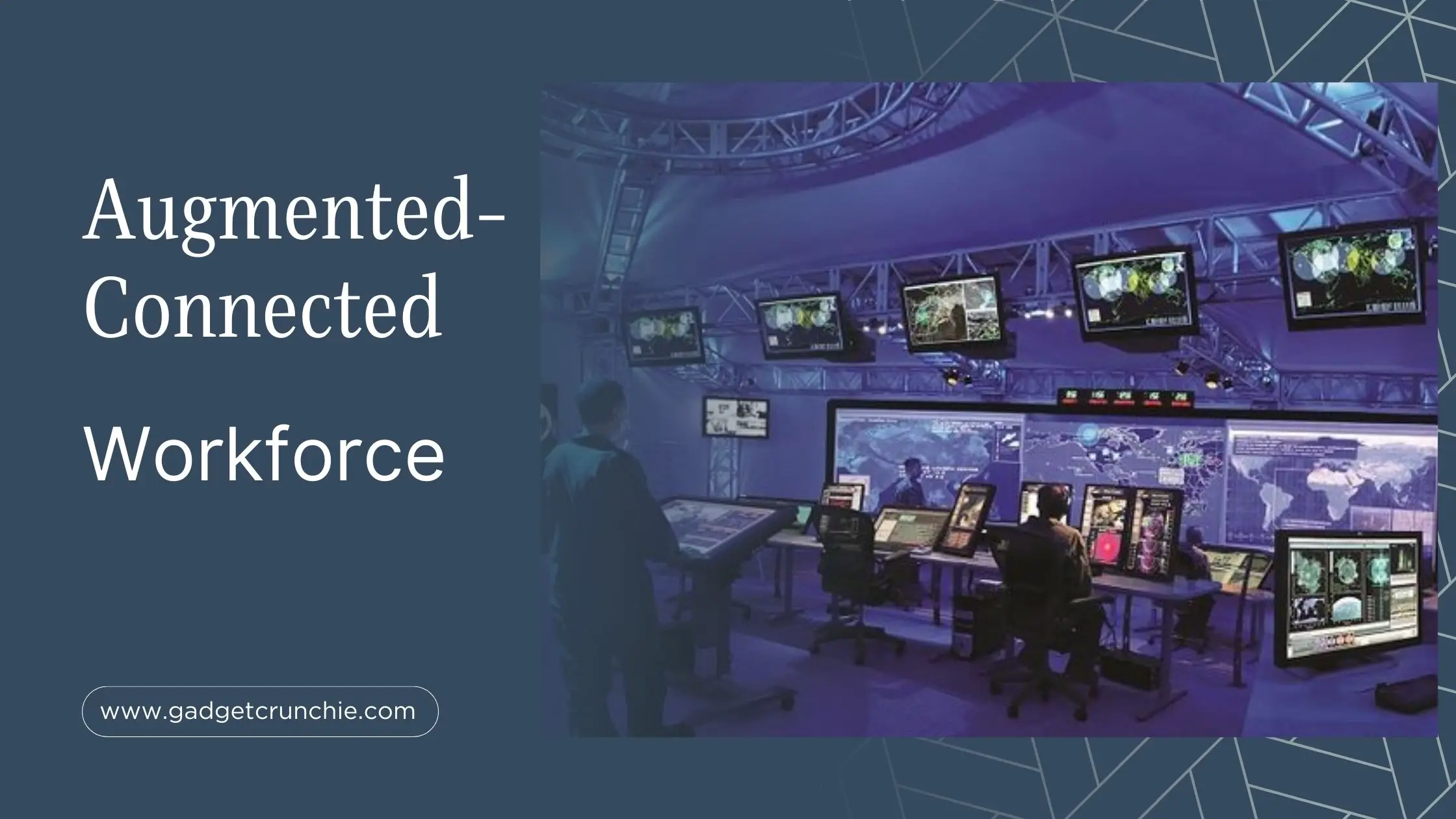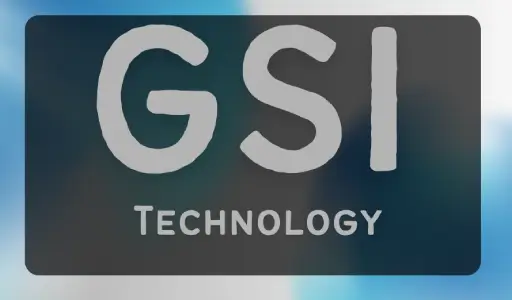1. Introduction to the Augmented-Connected Workforce

Understanding the Concept of Augmented-Connected Workforce
Picture this: a workforce where humans team up with cutting-edge technologies like augmented reality to boost productivity and connectivity. That’s the augmented-connected workforce in a nutshell.
Evolution of Workforce Connectivity with Augmented Technologies
From the days of cubicles and fax machines, we’ve come a long way. Augmented technologies have transformed how we connect and collaborate at work, blurring the lines between physical and digital realms.
2. The Role of Augmented Reality in Enhancing Workforce Connectivity
Exploring the Potential of Augmented Reality in Workforce Enhancement
Augmented reality isn’t just for gaming anymore. It’s revolutionizing how teams interact, learn, and problem-solve, ushering in a new era of seamless connectivity in the workplace.
Applications of Augmented Reality for Improved Connectivity
From virtual team huddles to hands-on training simulations, augmented reality is reshaping the way we work. Imagine being able to collaborate with colleagues worldwide as if they were right next to you—AR makes it possible.
3. Benefits of a Connected Workforce in the Digital Age

Enhanced Collaboration and Communication
In a world where remote work is the norm, a connected workforce bridges the gap between team members, fostering real-time collaboration and communication regardless of physical location.
Increased Efficiency and Productivity
With augmented-connected strategies in place, tasks are streamlined, decisions are faster, and productivity soars. Say goodbye to siloed workflows and hello to a well-oiled, efficient machine of a workforce.
4. Implementing Augmented-Connected Strategies for Workplace Productivity
Integrating Augmented Technologies into Existing Workforce Systems
Ready to take the plunge into the augmented world? Integrating AR seamlessly into your existing workforce systems can significantly boost efficiency and connectivity, taking your team to new heights.
Training and Upskilling Employees for Augmented-Connected Workflows
Equipping your workforce with the skills to harness augmented technologies is key. Training and upskilling programs tailored to embrace AR workflows ensure that your team is ready to unlock the full potential of the augmented-connected future.
5. Challenges and Considerations in Transitioning to an Augmented-Connected Workforce
Overcoming Resistance to Change
Transitioning to an augmented-connected workforce can feel like trying to teach your grandparents how to use Snapchat – daunting and potentially met with reluctance. Overcoming resistance to change involves effective communication, training, and showing the team the value and benefits of embracing these shiny new tech tools.
Ensuring Data Security and Privacy in Augmented Work Environments
Just like guarding the last slice of pizza, ensuring data security and privacy in augmented work environments requires vigilance. Companies need robust cybersecurity measures, clear policies, and a sprinkle of encryption to protect sensitive information from prying eyes and cyber threats.
6. Case Studies: Successful Integration of Augmented Technologies in Workforce Operations
Real-world Examples of Companies Leveraging Augmented-Connected Workforce Models
Many companies have jumped on the augmented-connected workforce bandwagon, from small startups to tech-savvy giants. These trailblazers have successfully integrated augmented technologies into their operations, enhancing productivity, streamlining processes, and boosting employee engagement.
Lessons Learned and Best Practices from Implemented Strategies
Like a good cup of coffee, implementing augmented technologies in workforce operations requires a perfect blend of strategy and execution. Companies that have navigated this terrain share valuable lessons learned and best practices, such as fostering a culture of innovation, investing in continuous training, and adapting flexibly to changing tech landscapes.
7. Future Trends and Innovations in Augmented-Connected Workforce Solutions
Emerging Technologies Shaping the Future of Workforce Connectivity
The future of workforce connectivity is as bright as a neon sign in Times Square. Emerging technologies like AI, extended reality, and IoT are reshaping how we collaborate and work together. Imagine virtual meetings with holographic colleagues or AI assistants making your coffee – the possibilities are as endless as a buffet at a Vegas hotel.
Potential Impacts of Augmented-Connected Workforce on Industries
The potential impacts of an augmented-connected workforce on industries are akin to a spice rack – adding flavor and zest to traditional ways of working. From revolutionizing customer experiences to optimizing supply chains, industries across the board are gearing up for a seismic shift in how work gets done. So buckle up, because the future of work is looking more augmented and connected than ever before.
Conclusion
The concept of an augmented-connected workforce represents a significant evolution in how organizations can leverage technology to enhance collaboration, productivity, and efficiency. As industries continue to embrace augmented technologies and connectivity solutions, businesses need to adapt, innovate, and empower their workforce for the digital age. By understanding the benefits, challenges, and future trends of an augmented-connected workforce, businesses can position themselves for success in a rapidly evolving and interconnected world.




